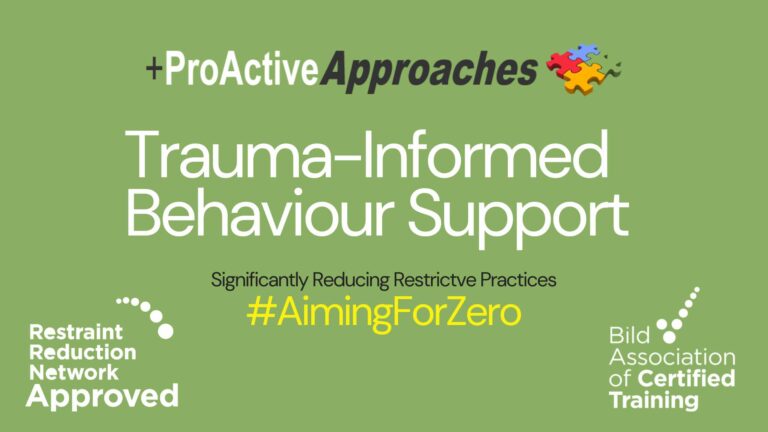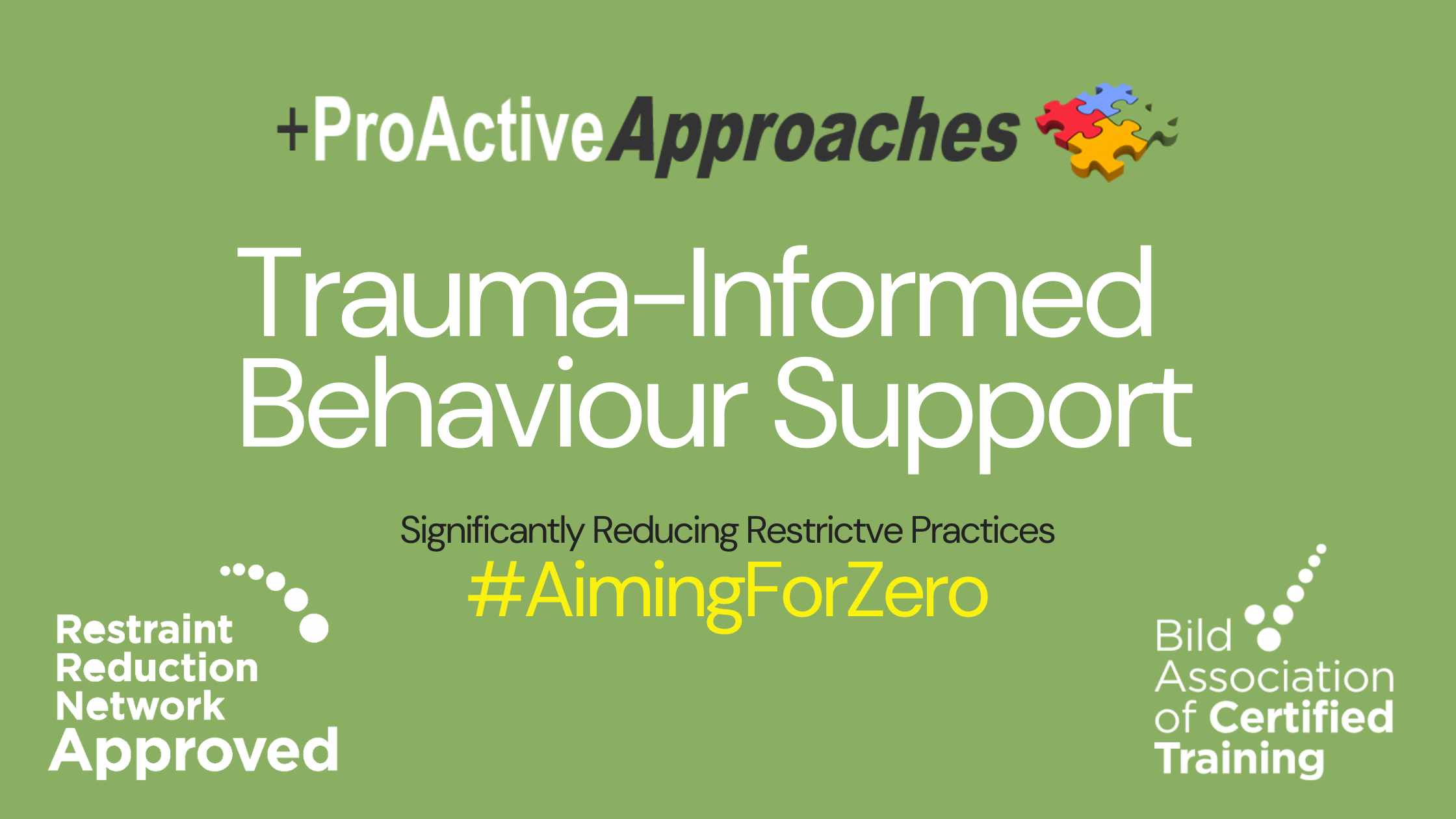Positive behaviour support (PBS) is a proactive approach that aims to improve the quality of life for individuals with challenging behaviours. It focuses on understanding the underlying causes of these behaviours and implementing strategies to promote positive, functional, and adaptive behaviours.
In this blog post, we will delve into the principles of positive behaviour support, explore its history and evolution, and highlight its key benefits. We will also discuss how to effectively implement positive behaviour support, including the assessment of behavioural issues, creation of a PBS plan, and monitoring of its implementation.
While positive behaviour support has many advantages, it is not without its challenges. We will identify common challenges that arise when applying PBS and present effective strategies to overcome them. Additionally, we will showcase case studies of successful positive behaviour support interventions in educational, home, and community settings.
Whether you are a caregiver, educator, or professional working with individuals who exhibit challenging behaviours, this blog post will provide you with a comprehensive understanding of positive behaviour support principles and empower you to apply them effectively in your own context.
Join us as we explore the world of positive behaviour support and discover its transformative potential in promoting positive change and enhancing the lives of individuals with challenging behaviours.
Introduction to Positive Behaviour Support (PBS)
Positive Behaviour Support (PBS) is an evidence-based approach that aims to improve the quality of life for individuals with challenging behaviours. It is a person-centred and proactive approach that focuses on understanding the underlying causes of behaviours and implementing strategies to promote positive, functional, and adaptive behaviours.
What is Positive Behaviour Support?
Positive Behaviour Support is a comprehensive framework that emphasizes the use of evidence-based strategies to enhance the well-being and quality of life for individuals with challenging behaviours. It is based on the understanding that challenging behaviours are a form of communication and that by addressing the underlying needs and providing appropriate support, these behaviours can be reduced or replaced with more desirable alternatives.
PBS takes a holistic approach by considering the individual’s unique strengths, preferences, and needs. It emphasizes the importance of creating a supportive environment that promotes positive interactions, teaches new skills, and focuses on prevention rather than punishment.
History and Evolution of PBS
Positive Behaviour Support has its roots in the field of Applied Behaviour Analysis (ABA), which emerged in the 1960s. Initially, ABA focused primarily on behaviour reduction techniques, such as punishment and reinforcement, to modify behaviours. However, over time, researchers and practitioners recognized the need for a more comprehensive and positive approach.
In the 1980s, the concept of Positive Behaviour Support began to take shape. It was influenced by the work of behaviour analysts, psychologists, and educators who sought to move away from punitive approaches and instead focus on promoting positive behaviours through proactive strategies.
Since then, Positive Behaviour Support has evolved and gained recognition as an effective and ethical approach for supporting individuals with challenging behaviours across various settings, including schools, homes, and communities.
Key Benefits of Using PBS
Positive Behaviour Support offers numerous benefits for individuals, families, and professionals involved in supporting individuals with challenging behaviours. Some of the key benefits include:
- Improved Quality of Life: By implementing positive behaviour support strategies, individuals experience an enhanced quality of life as their challenging behaviours decrease, and they learn more adaptive and functional behaviours.
- Person-Centred Approach: PBS recognizes the uniqueness of each individual and tailors interventions to their specific needs, preferences, and strengths. It promotes a person-centred approach that respects individual rights and dignity.
- Collaboration and Teamwork: Implementing PBS involves collaborative efforts among professionals, caregivers, and individuals themselves. It fosters teamwork and open communication to ensure a comprehensive and effective support system.
- Prevention and Early Intervention: PBS emphasizes proactive strategies and early intervention to prevent the escalation of challenging behaviours. By addressing underlying needs and providing appropriate support, the occurrence of challenging behaviours can be minimized.
- Evidence-Based Practices: Positive Behaviour Support is grounded in research and evidence-based practices. It draws upon a range of strategies and interventions that have been proven effective in supporting individuals with challenging behaviours.
By understanding and applying the principles of Positive Behaviour Support, individuals with challenging behaviours can experience improved quality of life, while those supporting them can achieve more positive outcomes and create a supportive and inclusive environment.
Understanding the Principles of Positive Behaviour Support
Positive Behaviour Support (PBS) is built on a set of core principles that guide its implementation and effectiveness. Understanding these principles is crucial for effectively applying PBS strategies and interventions. In this section, we will explore the key principles of Positive Behaviour Support in depth.
Respect for Individual’s Rights and Dignity
One of the fundamental principles of Positive Behaviour Support is the recognition and respect for the rights and dignity of every individual. This principle emphasizes that all individuals, regardless of their abilities or behaviours, deserve to be treated with dignity, respect, and fairness. It promotes an inclusive and supportive environment that values the uniqueness and worth of each person.
In the context of PBS, respecting an individual’s rights and dignity means ensuring their autonomy, privacy, and freedom of choice. It involves actively involving the individual in decision-making processes related to their own behaviour support plan and ensuring their voice is heard and valued.
Promotion of Functional and Adaptive Behaviours
Positive Behaviour Support focuses on promoting functional and adaptive behaviours as alternatives to challenging behaviours. This principle recognizes that challenging behaviours often serve a purpose for the individual, such as communication of needs, avoidance of aversive situations, or seeking attention. By identifying the function or purpose of the challenging behaviour, PBS aims to teach individuals more appropriate and effective ways to meet their needs.
Promoting functional behaviours involves teaching individuals alternative skills and strategies that serve the same purpose as the challenging behaviour but in a more socially acceptable and constructive manner. This may include communication skills, problem-solving strategies, self-regulation techniques, and social interaction skills.
Emphasis on Prevention Strategies
Prevention is a key principle of Positive Behaviour Support. Rather than waiting for challenging behaviours to occur and then reacting to them, PBS emphasizes the importance of proactive strategies to prevent the occurrence of challenging behaviours in the first place.
Prevention strategies may include creating a structured and predictable environment, establishing clear expectations and routines, providing visual supports, teaching self-regulation strategies, and ensuring individuals have access to appropriate supports and resources. This principle recognizes that by addressing underlying needs and creating supportive environments, the occurrence of challenging behaviours can be significantly reduced.
Utilizing Data for Decision Making
Data-based decision making is a critical principle of Positive Behaviour Support. It involves collecting and analysing relevant data to inform the development and implementation of behaviour support plans. This data may include information about the frequency, intensity, and duration of challenging behaviours, as well as the antecedents and consequences associated with these behaviours.
By collecting and analysing data, PBS practitioners can gain insights into the patterns and triggers of challenging behaviours, identify the effectiveness of interventions, and make informed decisions about the modification of support strategies. This principle ensures that behaviour support plans are individualized, evidence-based, and responsive to the unique needs of each individual.
Understanding and applying these principles of Positive Behaviour Support forms the foundation for effective intervention and support for individuals with challenging behaviours. By upholding the principles of respect, promoting functional behaviours, emphasizing prevention, and utilizing data for decision making, PBS practitioners can create a supportive and inclusive environment that enhances the well-being and quality of life for individuals with challenging behaviours.
How to Implement Positive Behaviour Support
Implementing Positive Behaviour Support (PBS) involves a systematic and collaborative approach that aims to address challenging behaviours effectively. In this section, we will explore the step-by-step process of implementing PBS, from assessing behavioural issues to creating and monitoring a behaviour support plan.
Assessment of Behavioural Issues
The first step in implementing PBS is to conduct a thorough assessment of the individual’s challenging behaviours. This assessment involves gathering information about the behaviours, their frequency, intensity, and duration, as well as the antecedents and consequences associated with them.
Key components of behavioural assessment may include:
- Functional Behaviour Assessment (FBA): This involves analysing the function or purpose that the challenging behaviour serves for the individual. It helps identify the triggers, motivations, and underlying needs that drive the behaviour.
- Direct Observation: Observing and documenting the behaviours in various settings and situations can provide valuable insights into their patterns, triggers, and potential environmental factors contributing to the behaviour.
- Interviews and Surveys: Gathering information from the individual, caregivers, and relevant professionals through interviews and surveys can provide additional perspectives on the behaviours and their potential causes.
By conducting a comprehensive behavioural assessment, PBS practitioners can gain a deeper understanding of the challenging behaviours and tailor interventions to address the specific needs of the individual.
Creating a PBS Plan
Once the assessment is complete, the next step is to develop a behaviour support plan. This plan outlines the strategies and interventions that will be implemented to address the challenging behaviours and promote positive alternatives.
Key components of a behaviour support plan may include:
- Setting Clear Goals: Clearly defining the desired outcomes and behaviours that need to be addressed is essential. Goals should be specific, measurable, achievable, relevant, and time-bound (SMART).
- Strategies for Prevention: The plan should include proactive strategies to prevent the occurrence of challenging behaviours. This may involve modifying the environment, establishing clear expectations and routines, and teaching alternative skills.
- Teaching New Skills: The behaviour support plan should outline the teaching strategies and interventions that will be used to help the individual acquire new skills and behaviours. This may involve teaching communication skills, social skills, problem-solving techniques, and self-regulation strategies.
- Reinforcement and Rewards: The plan should incorporate positive reinforcement strategies to encourage and motivate the individual to engage in positive behaviours. This may involve providing praise, rewards, or incentives for desired behaviours.
- Crisis Management: In cases where challenging behaviours escalate to crisis situations, the plan should outline crisis management strategies to ensure the safety of the individual and others involved. This may include de-escalation techniques, calming strategies, and protocols for seeking additional support if necessary.
Implementing and Monitoring the PBS Plan
Once the behaviour support plan is created, it is important to implement and monitor its effectiveness. This involves actively implementing the strategies outlined in the plan, consistently collecting data on the individual’s behaviours, and making adjustments as necessary.
Key steps in implementing and monitoring the PBS plan include:
- Collaboration and Communication: Implementing PBS requires collaboration among all individuals involved in the individual’s support, including caregivers, educators, professionals, and the individual themselves. Clear and open communication ensures that everyone is on the same page and working towards the same goals.
- Data Collection and Analysis: Collecting data on the individual’s behaviours, as well as the implementation of the behaviour support plan, is crucial for monitoring progress and making informed decisions. This may involve using behaviour tracking tools, conducting regular observations, and documenting changes in behaviour over time.
- Ongoing Evaluation and Modification: Regularly reviewing and evaluating the effectiveness of the behaviour support plan is essential. If the plan is not producing the desired outcomes, modifications may be needed. This may involve adjusting strategies, setting new goals, or seeking additional professional support.
Implementing Positive Behaviour Support is an ongoing process that requires patience, collaboration, and continuous evaluation. By following a systematic approach, assessing behavioural issues, creating a behaviour support plan, and monitoring its implementation, individuals and their support systems can work together to address challenging behaviours effectively and promote positive outcomes.
Challenges and Solutions in Applying Positive Behaviour Support
Implementing Positive Behaviour Support (PBS) can come with its own set of challenges. In this section, we will explore some common challenges that may arise when applying PBS principles and strategies, and provide effective solutions to overcome these challenges.
Common Challenges in Applying PBS
- Lack of Knowledge and Training: One of the primary challenges is a lack of knowledge and training in PBS principles and strategies among caregivers, educators, and professionals. Without proper understanding, it can be difficult to effectively implement PBS and address challenging behaviours.
- Limited Resources and Support: Limited resources, including time, funding, and access to specialized professionals, can pose challenges in implementing PBS. The lack of necessary supports and resources may hinder the implementation of effective strategies.
- Resistance to Change: Resistance to change from individuals, caregivers, or professionals involved in the support process can be a significant challenge. It can be difficult to introduce new strategies or modify existing practices, especially if there is scepticism or fear of the unknown.
- Complexity of Behaviours: Challenging behaviours can be complex, and identifying the underlying causes and appropriate interventions may require in-depth analysis and expertise. Understanding the functions and motivations behind behaviours can pose challenges in designing effective support strategies.
Effective Strategies to Overcome these Challenges
- Education and Training: Providing comprehensive education and training on PBS principles and strategies to all individuals involved is crucial. This includes caregivers, educators, professionals, and even the individuals themselves. Training can empower them with the knowledge and skills needed to effectively implement PBS.
- Collaboration and Networking: Building a network of support and collaboration with other professionals, organizations, and community resources can help overcome limitations in resources and support. Collaboration allows for sharing of knowledge, experiences, and strategies, ultimately enhancing the effectiveness of PBS implementation.
- Building a Positive and Supportive Environment: Creating a positive and supportive environment that fosters open communication, trust, and teamwork is essential. This can help address resistance to change and create a shared vision for implementing PBS strategies.
- Continuous Professional Development: Encouraging and providing opportunities for ongoing professional development ensures that individuals involved stay updated with the latest research, strategies, and interventions in PBS. This helps build confidence and competence in applying PBS principles effectively.
- Individualized Approach: Recognizing that each individual is unique and may require tailored interventions is important. Applying a person-centred and individualized approach allows for addressing specific needs, preferences, and strengths, leading to more effective outcomes.
By addressing these challenges and implementing effective strategies, individuals and support systems can overcome obstacles and successfully apply Positive Behaviour Support principles. It is important to remember that implementing PBS is an ongoing process, and flexibility, adaptability, and continuous learning are key to achieving positive behaviour change and improving the quality of life for individuals with challenging behaviours.
Case Studies of Effective Positive Behaviour Support
Examining case studies of effective Positive Behaviour Support (PBS) interventions provides valuable insights into real-world applications and outcomes. In this section, we will explore case studies from various settings where PBS has been successfully implemented.
PBS in Educational Settings
Case Study 1: XYZ Elementary School
At XYZ Elementary School, a student named Sarah exhibited challenging behaviours, including aggression and non-compliance. The school implemented PBS by conducting a functional behaviour assessment (FBA) to identify the underlying causes of Sarah’s behaviours. They discovered that Sarah’s aggression was triggered by frustration due to difficulty communicating her needs.
Based on the FBA, the school developed a behaviour support plan that focused on teaching Sarah alternative communication skills, such as using visual aids and a communication board. They also implemented proactive strategies to prevent frustration, such as providing additional support during challenging tasks.
As a result of the PBS interventions, Sarah’s challenging behaviours significantly decreased. She began using alternative communication methods effectively, leading to improved social interactions and decreased frustration. The implementation of PBS not only positively impacted Sarah’s behaviour but also created a more inclusive and supportive environment for other students.
PBS in Home Settings
Case Study 2: The Johnson Family
The Johnson family had a child named Alex who displayed aggressive behaviours at home, often resulting in property destruction and self-harm. The family sought professional help and implemented PBS strategies to address the behaviours.
Through a comprehensive assessment, it was determined that Alex’s aggression was related to a lack of communication skills and difficulty managing frustration. The family created a behaviour support plan that included teaching Alex alternative communication methods, such as using visual schedules and social stories.
Additionally, the family implemented positive reinforcement strategies, such as providing rewards for engaging in appropriate behaviours and implementing a consistent routine to minimize triggers. Over time, Alex’s aggressive behaviours decreased, and the family reported improved communication and overall family dynamics.
PBS in Community Settings
Case Study 3: Community Support Program
A community support program implemented PBS strategies to support individuals with intellectual disabilities in a group home setting. The program aimed to reduce challenging behaviours and improve overall quality of life for the residents.
The program conducted functional behaviour assessments for each resident to identify the functions and triggers of their challenging behaviours. Based on the assessment, individualized behaviour support plans were developed, which included teaching alternative coping skills, implementing visual supports, and providing positive reinforcement for appropriate behaviours.
Through the implementation of PBS, the program observed a significant reduction in challenging behaviours among the residents. The individuals showed improved social interactions, increased independence, and enhanced overall well-being.
These case studies highlight the effectiveness of Positive Behaviour Support in various settings, including educational, home, and community environments. By understanding the unique needs of individuals and implementing evidence-based strategies, PBS can bring about positive behaviour change, enhance quality of life, and create supportive and inclusive environments.





